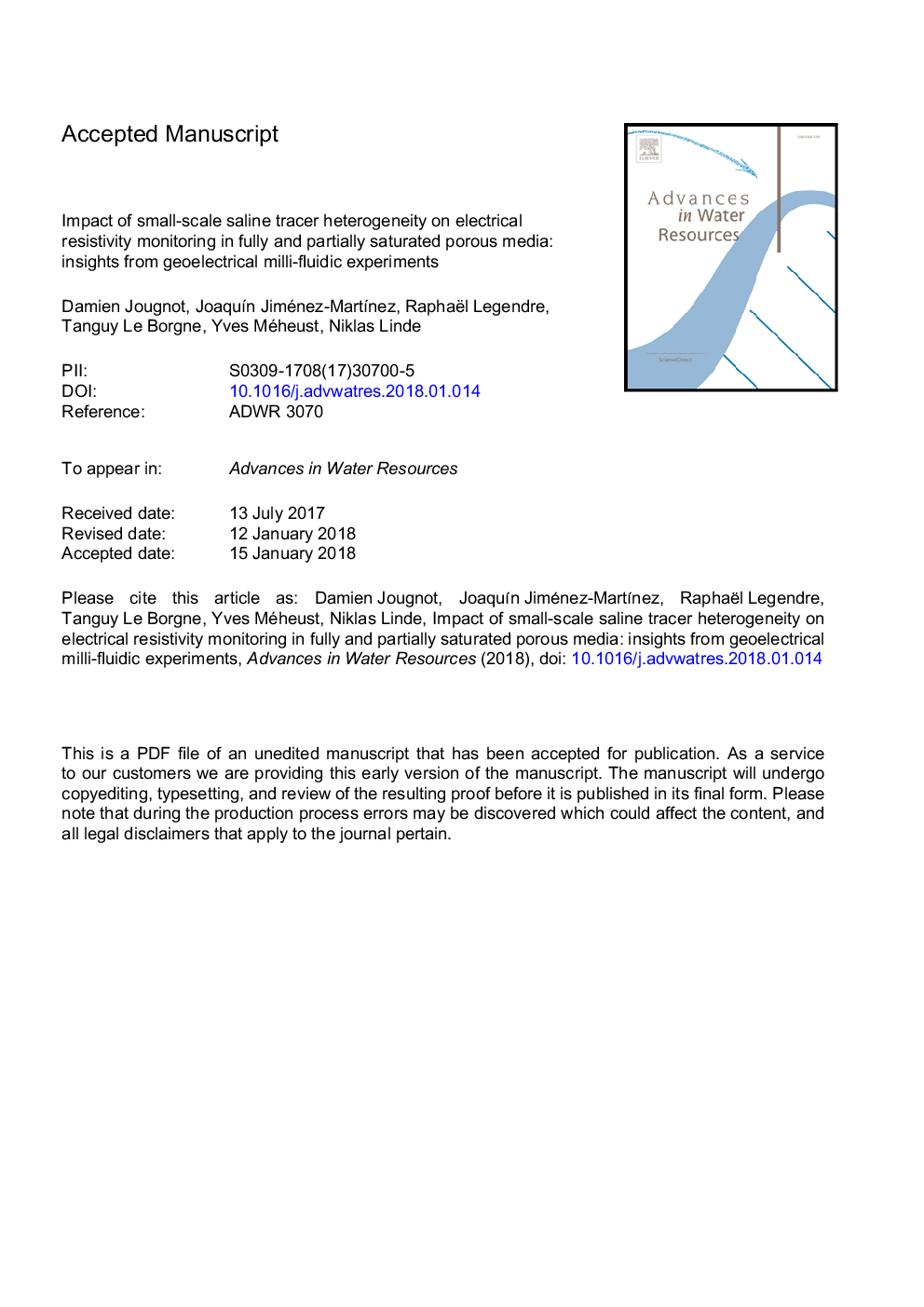| کد مقاله | کد نشریه | سال انتشار | مقاله انگلیسی | نسخه تمام متن |
|---|---|---|---|---|
| 8883366 | 1625598 | 2018 | 45 صفحه PDF | دانلود رایگان |
عنوان انگلیسی مقاله ISI
Impact of small-scale saline tracer heterogeneity on electrical resistivity monitoring in fully and partially saturated porous media: Insights from geoelectrical milli-fluidic experiments
ترجمه فارسی عنوان
اثر ناهمگنی ردیاب سالینی ضعیف در نظارت بر مقاومت الکتریکی در رسانه های متخلخل به طور کامل و بخشی اشباع شده: بینش های آزمایش های میلز مایع
دانلود مقاله + سفارش ترجمه
دانلود مقاله ISI انگلیسی
رایگان برای ایرانیان
کلمات کلیدی
موضوعات مرتبط
مهندسی و علوم پایه
علوم زمین و سیارات
فرآیندهای سطح زمین
چکیده انگلیسی
Time-lapse electrical resistivity tomography (ERT) is a geophysical method widely used to remotely monitor the migration of electrically-conductive tracers and contaminant plumes in the subsurface. Interpretations of time-lapse ERT inversion results are generally based on the assumption of a homogeneous solute concentration below the resolution limits of the tomogram depicting inferred electrical conductivity variations. We suggest that ignoring small-scale solute concentration variability (i.e., at the sub-resolution scale) is a major reason for the often-observed apparent loss of solute mass in ERT tracer studies. To demonstrate this, we developed a geoelectrical milli-fluidic setup where the bulk electric conductivity of a 2D analogous porous medium, consisting of cylindrical grains positioned randomly inside a Hele-Shaw cell, is monitored continuously in time while saline tracer tests are performed through the medium under fully and partially saturated conditions. High resolution images of the porous medium are recorded with a camera at regular time intervals, and provide both the spatial distribution of the fluid phases (aqueous solution and air), and the saline solute concentration field (where the solute consists of a mixture of salt and fluorescein, the latter being used as a proxy for the salt concentration). Effective bulk electrical conductivities computed numerically from the measured solute concentration field and the spatial distributions of fluid phases agree well with the measured bulk conductivities. We find that the effective bulk electrical conductivity is highly influenced by the connectivity of high electrical conductivity regions. The spatial distribution of air, saline tracer fingering, and mixing phenomena drive temporal changes in the effective bulk electrical conductivity by creating preferential paths or barriers for electrical current at the pore-scale. The resulting heterogeneities in the solute concentrations lead to strong anisotropy of the effective bulk electrical conductivity, especially for partially saturated conditions. We highlight how these phenomena contribute to the typically large apparent mass loss observed when conducting field-scale time-lapse ERT.
ناشر
Database: Elsevier - ScienceDirect (ساینس دایرکت)
Journal: Advances in Water Resources - Volume 113, March 2018, Pages 295-309
Journal: Advances in Water Resources - Volume 113, March 2018, Pages 295-309
نویسندگان
Damien Jougnot, JoaquÃn Jiménez-MartÃnez, Raphaël Legendre, Tanguy Le Borgne, Yves Méheust, Niklas Linde,
